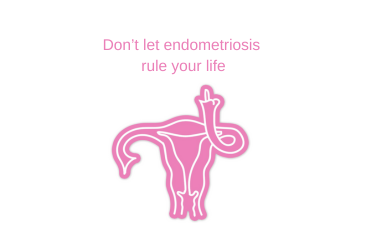The average time it takes to get help with endometriosis diagnosis is 6 to 8 years, with some people experiencing delays of 7-10 years from the onset of symptoms to a confirmed diagnosis. This delay is huge, and it highlights the importance of raising awareness about this condition.
March is Endometriosis Awareness Month, and the theme this year is “Let’s Talk Endo.” The campaign is dedicated to breaking the silence around endometriosis, and helping people get the support and care they need sooner. So let’s talk about it—let’s talk endo!
What is Endometriosis?
Endometriosis is a condition where tissue similar to the lining of the uterus (called endometrium) begins to grow outside the uterus. These endometrial-like cells can grow on other organs, such as the ovaries, fallopian tubes, or even the intestines. These cells respond to the hormonal changes of the menstrual cycle, leading to bleeding and inflammation when you menstruate. Over time, this can lead to scarring, adhesions, and significant pain.
Endometriosis affects about 1 in 7 women of reproductive age, with pain levels ranging from mild to severe.
Getting Help with Endometriosis Diagnosis
The only way to definitively diagnose endometriosis is through surgery—specifically, an exploratory laparoscopy. During this procedure, a surgeon can confirm the presence of endometrial-like tissue and, in many cases, remove it, which can significantly alleviate pain.
Recognising Symptoms to Get Help with Endometriosis
Endometriosis affects people in different ways, and recognising the symptoms is crucial in seeking the help you need.
The most common symptoms include:
Pain
- Painful periods that feel more intense than typical menstrual cramps
- Pain during or after sex
- Abdominal, lower back, and pelvic pain
- Pain during ovulation, often radiating to your thighs or legs
- Pain when emptying the bladder or bowel
- Pain that worsens over time
- Pain that limits your daily activities
Bladder and bowel problems
- Frequent urination
- Needing to rush to get to the toilet
- Difficulty and / or pain emptying the bladder or bowel
- Abdominal pain and bloating
- Pain with sexual activity
Other symptoms
- Fatigue, particularly during your period
- Vaginal discomfort
- Mood changes, including anxiety or depression
Treatment Options to Help with Endometriosis
There are several treatment options to help manage the symptoms of endometriosis and improve quality of life:
- Pain-Relief Medications
- Over-the-counter pain relievers like paracetamol or non-steroidal anti-inflammatory drugs (NSAIDs) such as ibuprofen can provide temporary relief.
- Hormone Therapy
- Hormonal treatments, such as combined contraceptives, progestogens, and Gonadotrophin-releasing hormone analogues (GnRH agonists), can help control the hormonal activity that drives endometriosis.
- Non-Hormonal Treatments
- Some antidepressants are used to help manage pain by altering the central nervous system’s response to discomfort. However, research on their effectiveness for endometriosis is still reasonably limited.
- Surgery
- As mentioned, surgery (often exploratory) is essential for confirming the diagnosis and can also involve removing endometriosis tissue to reduce pain.
- Pelvic Health Physiotherapy
- Pelvic health physiotherapists can offer help with endometriosis, with strategies to manage pain and other symptoms effectively. This can include:
- Pain management – for cramping, abdominal/pelvic discomfort, back pain, and pain during sexual activity.
- Bladder and bowel management – including addressing issues like constipation or frequent urination.
- Pelvic floor therapy – for relaxation and strengthening, which can ease pain and discomfort.
- Scar tissue release.
- Treatment of muscle imbalances.
- Stress reduction – sleep advice, breathing and relaxation exercises, stress relieving strategies.
- Exercise advice – including strategies for improving mobility, posture, strength and exercise tolerance.
- Pelvic health physiotherapists can offer help with endometriosis, with strategies to manage pain and other symptoms effectively. This can include:
Goals of Treatment
The primary goals of any treatment for help with endometriosis are:
- Pain relief
- Improving pelvic floor and muscle function
- Addressing bladder and bowel issues
- Enhancing overall quality of life
At Pelvic Health Physiotherapy, we provide individualised assessments and treatment plans to help manage endometriosis symptoms. No referral from a doctor is necessary to access our services, so if you’re struggling with endometriosis, you can get the help you need today.
Let’s keep the conversation going, raise awareness, and ensure that everyone living with endometriosis gets the help they deserve.

